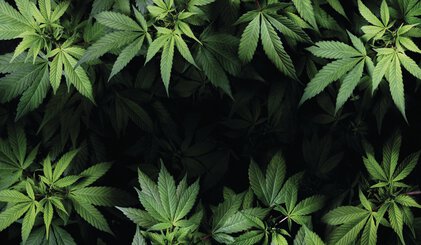Cannabis Extraction
Temperature Control Systems in Action
Cannabis is a crop that has been cultivated for thousands of years and contains many pharmacologically active substances. In recent years, cannabis has become increasingly important in medicine, which is why efficient procedures for extracting and isolating the active ingredients from the cannabis plant are becoming increasingly important.
Use of cannabis products
Cannabis has long been known primarily for the psychoactive substance THC, which is used in medicine, among others, in pain therapy. In recent years, however, other cannabinoids have moved into the focus of science. They are currently being studied intensively and with surprising results for their pharmacological effects. Some are already considered to be the beacon of hope for several chronic and acute conditions. In particular, the non-psychoactive CBD has a vast spectrum of activity with excellent tolerability. In addition, the terpenes, fats, and waxes contained in cannabis are increasingly used as an admixture in the cosmetics industry. The market for cannabis extracts will, therefore, continue to grow in the future - especially as more and more countries legalize cannabis for medical purposes.
Standard principles in cannabis extraction
For the manufacture of cannabis products, the cannabinoids and other ingredients are first extracted from the flowers and leaves of certified hemp plants using various solvents and procedures. The objective is the most complete and, above all, gentle extraction of all ingredients. Regardless of the procedure used, the solvent must be separated from the extract without residue at the end of the process.
The solvents used are primarily carbon dioxide and ethanol, but liquefied low molecular weight hydrocarbons such as butane or propane are used as well. Therefore, compliance with specific, partly changing temperature and pressure windows plays a decisive role in the cannabis extraction procedures. Depending on the physical state of the solvent under standard conditions, it must either be liquefied by cooling or pressure or vaporized by heating at the end of the process for the extraction.
Sophisticated temperature management of the processing plants ensures not only a high extraction yield but also an efficient recovery of the solvents used.
Example CO2 extraction
A good example of the mentioned principles is the so called supercritical carbon dioxide extraction, which is often used in the manufacture of cannabis extracts. Supercritical CO2 occurs when pressure and temperature are brought above the critical point, which is at a temperature greater than 30.98 °C and at a pressure of greater than 73.75 bar. In this state, the CO2 is as dense as a fluid, but has the same viscosity as a gas, so that the dissolving properties improve enormously. In the course of the extraction process, the pressure is lowered, whereby the CO₂ volatilizes and releases the dissolved substances.
Thanks to the temperature and pressure optimization, the CO2 systems can obtain extracts with a full terpene profile. Sophisticated extractors can even allow fractionation and thus isolation of specific compounds. Air heaters in the evaporator provide heating to aid in removing the CO2 from the extract. Integrated cooling, which then returns the gas to a liquid state, facilitates the recycling of CO2.
Consistent, accurate temperature control of all compounds and an adjustment of the cooling and heating capacity to variable conditions such as the specific plant material and the processed amount are crucial for the smooth and efficient operation of the process.
Further processing of cannabis extracts
After removal of the solvent, a fullspectrum crude oil is available is at the end of the extraction process, which - in addition to the cannabinoids - also contains plant waxes, lipids, terpenes, and other plant substances such as chlorophyll.
Since the cannabinoids are present in the plant and thus also in crude oil as carboxylic acids (THCa, CBDa, etc.), which show lower therapeutic effectiveness, they are activated by a process called decarboxylation: They are heated to a well-defined temperature over a specified period of time. Various procedures are available, with higher temperatures shortening the reaction time. The decarboxylation improves the bioavailability of cannabinoids - the body can process the active ingredients better. However, recent studies show that CBDa also has pharmacologically active properties that must be further investigated in the next few years.
Crude oil and decarboxylated crude oils are then further purified by filtration or distillation and partially separated into individual fractions. A refining process called “winterization” is, for example, used for the separation of waxes and terpenes from the oil and the concentration of the active ingredients: The crude oil is mixed with alcohol and cooled down, whereby the waxes crystallize out and can be separated by filtration.
Whether decarboxylation, distillation, or winterization: Accordingly, temperature control also plays a decisive role in the further processing of the crude oil.
Conclusion
The sale of cannabis products is increasing and requires efficient and low-maintenance extraction and refining processes. Numerous end products are currently available on the market - from the raw extract in different consistencies to the crystalline or the dissolved pure substance. The breadth of the possible administration forms is reflected in the multiplicity of processing methods. These require sophisticated temperature management that is perfectly adapted to the respective requirements. Our product range offers you all the equipment needed to build up the different temperature zones within the entire process. The individual temperature control systems are highly variable, easy to handle, and have an operating system designed down to the last detail. The benefit - all variables can be easily and precisely adjusted to your needs. You can determine the optimum parameters for the raw material and the desired end product.
If you have any questions or need detailed advice, please do not hesitate to contact us. We do not only offer the necessary technology - we also have the know-how to design and optimize the process. Together, we find a solution for cannabis extraction that is perfectly tailored to your needs.




